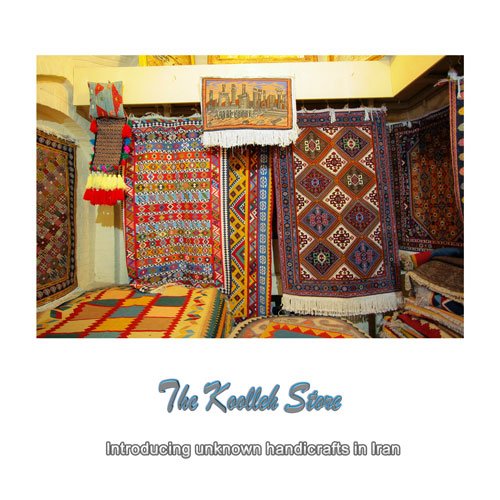Introducing unknown handicrafts in Iran

Some handicrafts are being forgotten because they are either less seen and their names are not familiar to all Iranians, or the last generation of artists in these fields is no longer in the world. Such as jokes or awe-inspiring and meticulous.
Although silk weaving and plus weaving are famous in Iran, but instead there are some handicrafts that although everyone sees their art, some of their names may not be familiar, such as embroidery. This art form, which is popular in most provinces, is in the group of handicraft embroideries and it means sewing teardrop pearls on heavy fabrics such as mahout, velvet and satin.
But in Iran, especially in the province of South Khorasan, there is also a handicraft in the field of wooden and wicker handicrafts called Espand weaving, which threads espand seeds and adds colorful tassels, etc. in various forms on the wicker cardboard surface. And they say fabric.
Yazdi artists also call a hand-woven fabric 75 to 90 centimeters wide and 25 centimeters long, and simple winding and striped designs for their school uniforms or local clothes, Armak Bafi, which is famous among them, but Iranians call it It is less heard or heard.
Some of the titles of these art disciplines are used only in the same province that was common, such as Izar, which in Qazvin is called the weaving of traditional blue cloth for the bread table.
Metkazin is for the villagers of the same name in Mazandaran. Hand-woven with vibrant cotton threads, with background weave and extra weave that creates patterns for metacazines, it is in the traditional textile group.
Sharabafi
Joke work is the production of objects using wood in different colors and geometric patterns on it with triangular and rectangular sections, which is one of the wooden and wicker handicrafts of the people of Abadeh in Fars province, and its sample cannot be found anywhere else. Did.
On the contrary, it is “Sharafah embroidery” that the people of Kashan, Isfahan, East Azerbaijan, Gorgan, Khorasan, Zahedan and Yazd know it well and embroider it on the margins of clothes, curtains and rugs with different techniques. It is called embroidery.
Shiriki Pich
Bukhara embroidery is also called a kind of embroidery that is not known due to the abundance of sewing the fabric of its lands, and this field is one of the handicrafts belonging to Isfahan province. The people of Isfahan also have “Papa Masheh”. Making different types of mirror frame pens, etc., using compressed paper on which traditional Iranian painting has been done, is called “Papa Masheh”.
However, the same Isfahani artists, along with artists from Sistan and Baluchestan Province and Hormozgani, had an art called “Parivar Bafi” which was called Latif Harir fabric from silk with a short dream, and this art, although it was in the group of traditional textiles, has become obsolete.
In the meantime, there are some arts that are called handicraft-related professions, such as making the skins of halal meat animals by removing wool, burning, salting, softening with a solution and castor oil or traditional tanning.
Refuges are also used to repair damage to carpets or to dye traditional plants.
Even some traditional arts depend on architecture, such as kilim masand. This kilim is specific to Ardabil, which is usually prepared for the prayer with the role of an altar, and other types of it are provided for the top of the guest room. Saru Barry is of the same type and is called the decoration of the exterior architecture of the building or the wet parts inside with lime mortar and is mostly used in Isfahan, Qazvin and Tehran provinces. Many of these traditional arts and crafts are forgotten in Iran, and since most of them are fine art, no one is following them to revive or keep them alive, so they are not introduced and no one goes to them. While handicrafts officials in Iran have always stated that Iran has more than 350 types of handicrafts, what is the use of many Iranians not even hearing the names of many of them, let alone getting to know them or even using this art in their lives.






